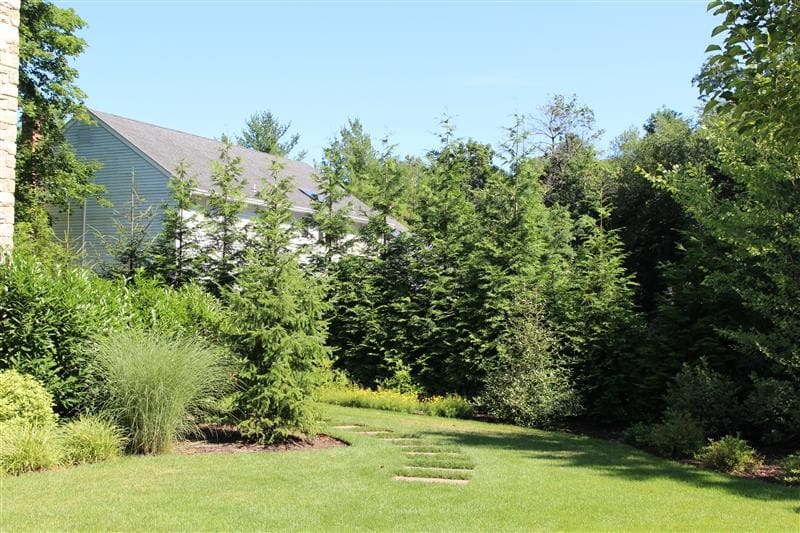Why Organic Fall Fertilization for Lawns Is the Healthiest Investment You Can Make Before Winter
As summer winds down and your lawn starts preparing for dormancy, there’s a narrow but critical window to give it the nutrients it needs to thrive come spring. Organic fall fertilization for lawns is one of the most beneficial and environmentally responsible ways to strengthen your turf before winter sets in. By focusing on root development and soil health in the fall, you set the stage for a lush, resilient lawn that comes back stronger and greener when the weather warms.
At Borst Landscape & Design, we use a holistic approach to fall fertilization that prioritizes long-term results and soil sustainability. If you’d like help developing an organic treatment plan tailored to your property, call us at (201) 822-9327 to schedule a consultation.
Why Fall Fertilization Is a Critical Step
Understanding the benefits of organic fall fertilization for lawns starts with what your grass is doing this time of year. While growth may be slowing above the surface, root systems are actively expanding. Cool-season grasses in particular enter a phase of root development during early to mid-fall. Feeding your lawn during this phase gives it the strength to endure winter and return vibrant in spring.
Timing Matters for Fall Lawn Fertilization
The ideal time for organic fall fertilization is typically from late September through early November. This window varies slightly based on local temperatures and weather patterns, but the principle remains the same: apply fertilizer while the soil is still warm enough for microbial activity and nutrient uptake, but late enough in the season to avoid stimulating unnecessary top growth.
Missing this window by fertilizing too early or too late can reduce the effectiveness of the treatment and limit the benefit to your lawn.
Compatibility With Other Fall Lawn Care Practices
Organic fertilization complements other essential fall maintenance steps. If you’re aerating your lawn, those newly opened channels allow organic nutrients to reach deeper into the root zone. If you’re overseeding, the gentle release of nutrients supports young grass seedlings without burning them or overstimulating growth.
This synergy between tasks is what makes fall such an ideal time for natural lawn improvement—and why skipping fertilization is a missed opportunity.
A Safer, Greener Approach to Lawn Care
Homeowners today are increasingly concerned with how their landscaping choices impact the environment. Chemical fertilizers often contain salts and synthetic compounds that can leach into waterways or alter soil pH. Organic fall fertilization for lawns avoids those risks entirely. It’s safe for children, pets, pollinators, and the planet.
You don’t have to choose between having a green lawn and living green. Organic methods allow you to support both goals without compromise.
The Organic Advantage Over Synthetic Options
Unlike synthetic fertilizers, which offer a quick burst of nutrients, organic options release nutrients slowly and steadily. This helps avoid overwhelming your lawn while feeding it consistently over time. Organic materials like composted manure, bone meal, or seaweed also enhance the soil itself—not just the grass. They support beneficial microbial activity, improve structure, and increase nutrient retention.
This slow, natural release is especially important in fall, when you’re not looking to boost top growth but to promote root health and resilience. The results may be less dramatic initially, but they are far more sustainable and effective long-term.
Organic Fertilizer Supports Soil Health
One of the biggest benefits of using organic fall fertilization for lawns is its positive effect on the soil. Every application contributes organic matter that improves the soil’s texture, drainage, and nutrient availability. Over time, your lawn becomes less dependent on outside inputs and more self-sustaining.
This natural cycle supports better root growth, reduces the need for frequent watering, and enhances your lawn’s ability to resist weeds and disease. When combined with other fall tasks like aeration or overseeding, organic fertilization boosts overall effectiveness and helps create a thicker, more resilient turf.
Application Tips for Best Results
As with any lawn care product, how you apply organic fertilizer matters just as much as what you apply. Follow recommended rates for your grass type and region.
- Use a spreader for even coverage
- Apply when the soil is moist—not saturated
- Water lightly afterward to help nutrients begin breaking down into the soil
Avoid applying before heavy rainfall, which can wash away nutrients before they’re absorbed. When applied correctly, organic fertilizers stay in place, nourish deeply, and support long-lasting health.
Building a Stronger Lawn With Every Season
Organic fall fertilization isn’t just about immediate results—it’s about building a healthier landscape over time. Many homeowners who adopt organic lawn care notice fewer weeds, more consistent color, and better drought resistance within just a season or two.
By investing in soil quality now, you’re laying the groundwork for a low-maintenance, high-performance lawn that looks and feels better year-round.
Choosing organic fall fertilization for lawns is more than just a seasonal task—it’s a long-term commitment to soil health, plant resilience, and eco-friendly care. When done correctly, it sets your lawn up to thrive through winter and come back fuller, greener, and healthier each spring.
If you’re ready to nourish your landscape the natural way, Borst Landscape & Design can help! Call us at (201) 822-9327 or contact us online to schedule your consultation so we can help you build a lawn that grows stronger every season—organically.

